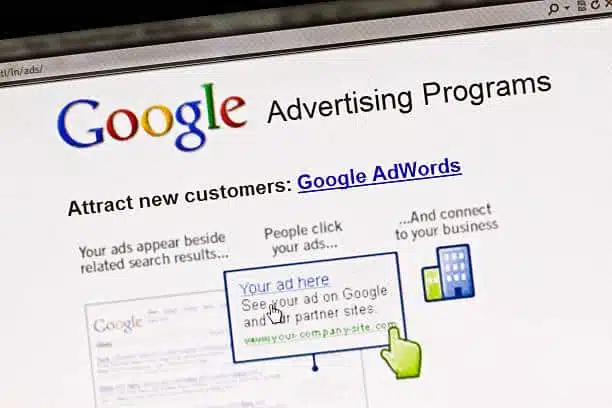Search ads just became more transparent—whether advertisers like it or not.
Google is rolling out invisible search ad labels in My Ad Center. These labels show who actually paid for an ad, often a parent company or agency, not the visible brand. This Google Ads transparency impacts how marketers manage brand trust, structure ad accounts, and handle agency visibility.
In this blog, we’ll explain what’s changing, why it matters, and how you can confidently adapt your pay-per-click (PPC) strategy in the ever-changing advertising landscape.
- What are invisible search ad labels?
- Why Google made this change
- How invisible ad labels affect marketers and brands
- What marketers need to do right now
- Long-term implications of Google’s transparency push
What Are Invisible Search Ad Labels?

Invisible search ad labels refer to the way advertisers can choose to hide the typical “Sponsored” or “Ad” label in social media platforms so that their ads appear organic. Recently, however, new “Ads funded by” disclosures have started showing up in Google Search via My Ad Center.
These labels reveal the payment profile name associated with a given ad, which may not match the public-facing brand name users expect. For example, users might see that “Agency Holdings LLC” or a lesser-known corporate parent funds the ad instead of displaying “Brand X.”
The result? Google is surfacing behind-the-scenes funding details that used to stay hidden. While the rollout is ongoing, this change is part of a broader push for transparency and advertiser accountability in the Google paid search ecosystem.
Why Google Made This Change
This move stems from increasing pressure to bring more clarity and accountability to digital advertising. Consumers today are more privacy-aware, governments are tightening regulations, and platforms like Google respond by placing transparency at the core of ad experiences.
Starting May 2025, Google now requires all verified advertisers to display their payment profile names, even when using agencies or white-label PPC services, a move aimed at restoring trust by making ad funding more transparent.
Google says the goal is simple: to give users more insight into the ads they see. However, the broader implication is clear—users now control how they perceive brands in search results, not the brands themselves.
How Invisible Ad Labels Affect Marketers and Brands

The new labels may seem like a minor UI tweak, but they carry significant implications for trust, branding, and agency relationships.
- Brand Trust: If the funding name doesn’t match the brand, users may question credibility or assume the ad is misleading.
- Agency Relationships: Hidden partnerships between agencies and clients are now visible, potentially complicating white-label or behind-the-scenes service models.
- Corporate Structures: Parent companies and brand portfolios are more exposed, even if individual brands prefer to stay distinct.
- User Perception: Transparency can build trust, but mismatched or unfamiliar names may confuse users or create reputational friction.
What Marketers Need to Do Right Now
This shift requires proactive steps to avoid confusion or brand damage. Here’s what you can do:
Audit Your Payment Profiles
Review your Google Ads payment profile settings to ensure the name shown in “Ads funded by” matches your public-facing brand. If you’re using a holding company or agency name, consider updating it for consistency and clarity.
A clear match between your payment profile and brand name helps reinforce trust, reduce confusion, and ensures users immediately recognize your business in search results.
Update Your PPC Strategy
Align your naming conventions, ad messaging, and account structure with Google’s transparency requirements. Revisit how your brand appears across campaigns to ensure consistency and clarity.
These updates support a more unified brand experience, improving ad credibility, user engagement, and long-term campaign performance.
Manage Brand Reputation
Monitor users’ responses to the new label format closely using ad metrics, feedback, and brand sentiment tools. Pay attention to shifts in engagement, click-through rate, or conversions after label changes go live.
Proactively managing your reputation in this new environment helps safeguard your brand image and ensures you can quickly adapt if negative perceptions arise.
Consider Profile Consolidation
If you operate multiple brands or business units under separate payment profiles, assess whether consolidation is possible or necessary. When appropriate, align profiles with the most visible, consumer-facing names.
This helps create a smoother user experience and strengthens brand recognition by reducing fragmented or unfamiliar naming in search ads.
Long-Term Implications of Google’s Transparency Push
This is just the beginning of a new era of ad accountability. As transparency becomes the norm, expect these implications in the near future:
- Fewer “black box” relationships: As hidden partnerships become visible, agencies may need to move toward co-branding or adopt more transparent white-label models.
- Paid search may prioritize trusted funding signals: Google may increasingly favor advertisers with clear, consistent billing profiles and transparent account structures.
- Transparency will expand beyond Google: Similar ad disclosure requirements will likely appear across social media and programmatic platforms, making transparency a cross-channel standard.
How Marketing Done Right Helps Brands Adapt

At Marketing Done Right (MDR), we help brands navigate complex changes in the ad landscape with clarity and strategy. We offer expert support to align your brand with Google’s evolving transparency standards.
- PPC Structure Alignment: We audit your billing and funding setup to ensure alignment with your brand’s identity and campaign goals.
- Ad Transparency Compliance: We guide you through Google’s verification and disclosure policies to avoid mismatched labels or user confusion.
- Brand Trust Protection: We help identify and correct issues that could erode user trust, such as outdated payment profiles or inconsistent naming.
- Future-Proofing with GEO Strategy: Our approach blends AI SEO, transparency readiness, and paid search strategy, built to adapt to evolving ad platforms and AI-powered ecosystems.
Conclusion
Google’s invisible search ad labels mark a major shift in how paid search campaigns are perceived, pulling back the curtain on who funds an ad. Advertisers must act now to align their payment profiles, messaging, and partner relationships with the new transparency standards.
MDR is here to help you stay ahead. We audit PPC setups and protect brand trust in the age of disclosure to build campaigns prioritizing clarity, compliance, and long-term success.
Contact us today to future-proof your ad strategy and thrive in the new era of transparent search.